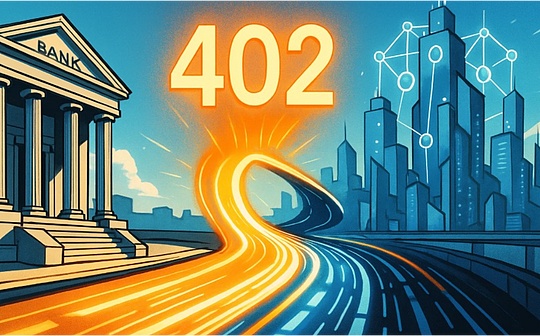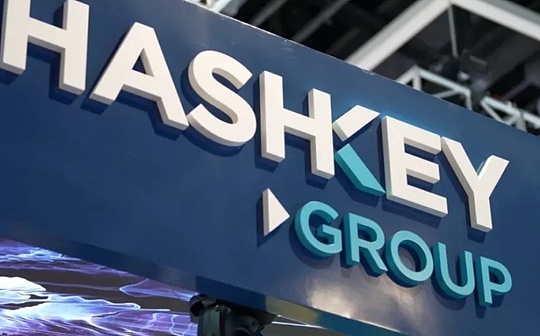
Author: YBB Capital Researcher Ac-Core
in conclusion
-
The concept of PayFi was introduced in the keynote address of the 7th EthCC conference, Lily Liu, president of the Solana Foundation.
-
The core of PayFi includes: 1. Emphasizes “instant settlement”, which has special value in speculative transactions; 2. Supports the “buy first and pay later” model to open up new ways for creators to monetize, invoice financing and payment risk management.
-
The key advantage of PayFi’s realization of its vision is to leverage Solana’s high performance to bridge the gap between the real world and blockchain, with regulation and scalability being the main challenges of widespread adoption.
-
Lily Liu briefly states: “PayFi aims to create new financial markets around the time value of money. On-chain finance enables new financial primitives and product experiences that traditional finance and even Web2 finance cannot achieve.”
1. What is PayFi?
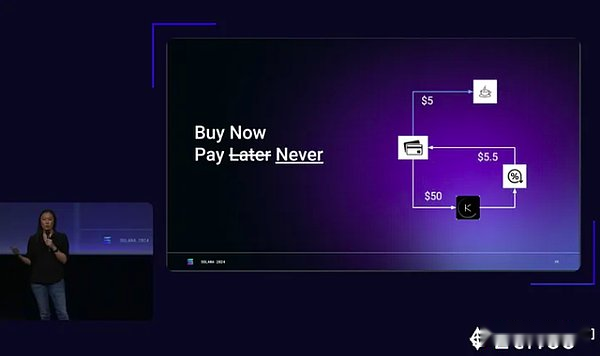
Source: The 7th EthCC Conference
PayFi, abbreviation for Payment Finance, is a new concept proposed by Solana Foundation Chairman Lily Liu at the July 2024 EthCC meeting.It is an innovative paradigm that combines payments with finance, emphasizing “instant transactions” to improve the efficiency of speculative transactions and various financial operations.According to Lily Liu’s definition, PayFi is a programmable financial structure that can realize new financial innovations above the settlement layer while processing payment transactions independently.According to Elponcho, here is a summary:
PayFi’s Vision:Create a programmable monetary system within an open financial system to provide users with economic sovereignty and self-custody capabilities.
PayFi use cases:New technologies give birth to new markets.PayFi supports the “buy now, never pay” model, leveraging on-chain finance and instant settlement to enable the profits generated on-chain to meet instant consumption needs immediately.For example, users can invest $50 on the chain to earn interest, and instant settlement and payment of that interest can be used to purchase a “free” cup of coffee.
In addition, PayFi can also support creators to make profits based on progress milestones (for example, YouTuber gets advertising revenue by 1 million views), provide invoice financing, manage payment risks, and develop global private credit on the Solana blockchainPool.Lily Liu believes PayFi will surpass DeFi and lead the next financial trend.
Solana and PayFi:Lily Liu stressed that Solana stands out in the blockchain space for its high performance, consistent demonstration of fast transaction speed and low cost, as well as its advantages in capital and talent liquidity.Obviously, Solana is a strong candidate for realizing her PayFi vision.
Three key factors in blockchain success:Lily Liu points out three key factors in blockchain success: fast, low-cost transactions, a wide user base and a strong developer community.She said Solana is currently the only ecosystem that has all three factors in hand.
The Future of PayFi and Solana:In the summary, Lily Liu highlights a variety of financial application scenarios on the Solana platform, including supply chain finance, payday loans, credit cards, corporate credit, interbank repurchase markets and insurance markets.These applications demonstrate the great potential of combining Solana with PayFi to disrupt traditional financial systems.
Lily Liu explains that PayFi is at the heart of the time value of money in her article Understanding PayFi: Solana’s Next Big Narrative, and illustrates this with three key examples:
1. Buy Now, Pay Never:
Most people are familiar with “Buy Now, Pay Later”, but “Buy Now, Pay Never” is almost the opposite.The former optimizes cash flow through installments and has a certain interest cost, while the latter allows funds to invest in DeFi products, and the interest earned can be used to pay for consumption without consuming principal.
For example, a user buys a $5 cup of coffee by depositing $50 into a lending product.Once the accumulated interest reaches $5, that interest will be used to pay for the coffee and the funds will be unlocked and returned to the user’s account.This process relies on the automatic execution of “programmable currency”.
2. Creator monetization:
Many creators face cash flow problems during content creation.While creation takes time and money, returns are often delayed, which can create financial stress and affect progress.In Lily Liu’s vision, PayFi can help creators monetize faster.For example, if a video is expected to generate $10,000 in revenue but it takes a month to achieve, creators can use PayFi to get $9,000 in cash right away, which can improve cash flow even if it means sacrificing some revenue.
3. Accounts receivable:
Accounts receivable are a common type of account in the financial relationship between enterprises and customers, referring to the money customers owed to the enterprise.Due to the existence of accounts receivable, companies may face cash flow problems.To solve this problem, businesses will often pledge accounts receivable to a financing company or sell it at a discount to get instant funds.PayFi aims to further simplify and optimize this process, accelerate settlement through blockchain, improve cash flow efficiency, lower thresholds, and enable more companies to use this supply chain financial tool to accelerate capital flow.
2. How PayFi integrates with DeFi: RWA is the bridge to new narratives
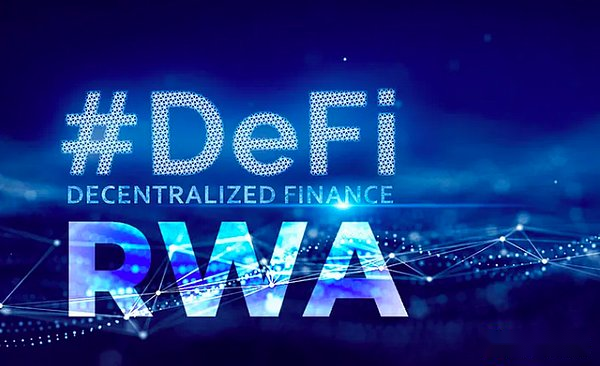
Source: Coincu
The origins of blockchain technology can be traced back to the revolutionary white paper “Bitcoin: A peer-to-peer electronic cash system” published by Satoshi Nakamoto in 2008.It laid the foundation for a new era of decentralized payments, not only creating a new form of currency, but also fundamentally changing the deeply rooted payment system in traditional finance.PayFi uses blockchain technology and smart contracts to manage capital flows using digital assets and decentralized finance (DeFi) tools.Its core philosophy is to optimize the time value of currency (TVM) and shorten settlement time through decentralized technology.Key operating principles include:
-
Time value of currency (TVM):PayFi emphasizes improving the time value of currency and helping users improve the efficiency of using funds.For example, users can deposit funds into a lending platform and use the interest generated to pay for daily expenses.For example, when buying a $5 cup of coffee, you can lock in $50, and the principal remains the same when interest accumulates enough to cover the cost of the coffee.
-
Smart contract automation:Smart contracts are at the heart of PayFi, allowing for the automatic execution of complex financial operations based on predefined conditions, reducing intermediary participation, speeding up transactions and reducing costs.
-
Real-world Asset Tokenization (RWA):PayFi tokenize real-world assets such as real estate and accounts receivable, facilitating cross-border payments and flow of funds.This not only increases the liquidity of physical assets, but also provides a new platform for global transactions.
As the demand for sustainable value assets in crypto ecosystems increases, risky assets naturally become a hot choice.Tokenized Treasury bonds with a yield of 4-5% have become the preferred on-chain capital asset over the past two years, with total value rapidly rising to $2 billion.Treasury yields are falling along with inflation concerns and central bank interest rate cuts, forcing capital to seek other high-yield, low-risk assets.This provides an opportunity for PayFi to rise in the risky asset space.
Typical use cases for PayFi include:
-
Cross-border payment financing:Arf transforms traditional cross-border payments by providing financial institutions with on-chain liquidity solutions, enabling 24/7 instant, transparent and low-cost USDC-based settlements without pre-injection global accounts.Cross-border payment financing provides high capital efficiency and scalability.
-
Enterprise cards backed by digital assets:Rain provides Web3 teams with USDC-powered corporate card settlement liquidity.The company deposits funds into the vault and sets a credit line in the vault. After each settlement cycle, the balance of the company’s card will be automatically repaid through on-chain asset liquidation, thereby reshaping expense management.
-
Trade Financing:BSOS combines an Enterprise Resource Planning (ERP) platform with on-chain liquidity to create RWAs in the supply chain, providing short-term financing options to meet business capital needs.
Real-world assets (RWA) can include:
-
Instant RWA settlement:Even assets with higher liquidity such as Treasury bonds or tokenized funds usually take 2-4 days to settle, because the underlying assets must be liquidated before redemption.Through the on-chain liquidity pool, these assets can provide real-time subscription and redemption 24/7, ensuring fast and transparent transactions.
-
DePIN Financing:With the rapid expansion of the DePIN ecosystem, many projects are starting from sharing large infrastructure costs and reallocating future value.For example, TL ay provides a critical trust infrastructure to accelerate the implementation of DePIN; Peaq customizes L1 for DePIN, allowing machines to efficiently trade or interact with humans, helping the development of the machine economy.
At the same time, the rise of stablecoins has become a bridge between fiat currency and blockchain, driving the emergence of real-world payment scenarios.Stablecoins have grown exponentially since 2014, indicating an increasing demand for blockchain innovation in the payments sector.Today, stablecoins support about $20 billion in organic payments each year, close to Visa’s annual payment processing volume.Although the crypto ecosystem overcomes challenges such as poor user experience, large latency, high transaction costs and compliance issues, unlocking the potential of stablecoins, there is still room for further development.A historical review of the payment system reveals the key role of financing mechanisms in their evolution.For example:
-
Credit Card: Contributes $16 trillion to merchant payments every year, demonstrating how financing can drive wide adoption and practicality.
-
Trade Financing: Provides $10 trillion annually for B2B payments, highlighting the key role of financing in global trade.
-
Cross-border payments: Support global remittances and settlements with $4 trillion in advance.Today, 1 in 6 households worldwide relies on remittances to make ends meet.
Without financing payments, global liquidity will be severely restricted.Similarly, without financing mechanisms, the utility and adoption of native Internet currencies will be hindered.PayFi was born to address these limitations.Lily Liu, Chairman of the Solana Foundation, articulated PayFi’s vision: “PayFi aims to create new financial markets around the time value of money. On-chain finance enables new financial primitives and product experiences that traditional or even Web2 finance cannot provide.”
3. Thoughts on PayFi
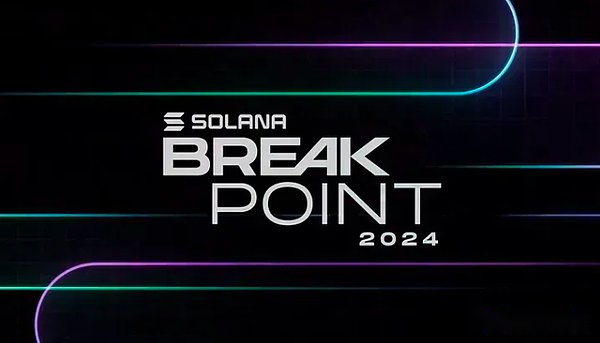
Source: Solana official website
Solana has been at the forefront of creating narratives in the crypto market, constantly stimulating market activity with various new stories.PayFi’s biggest advantage is to return to the innate ability of blockchain to subvert traditional finance, use decentralization and security to reduce fraud risks, improve transaction integrity, and eliminate traditional financial payments by compiling the entire transaction process onto the chain.Intermediary in the process.This lowers the threshold for users to participate in finance and positions PayFi as a bridge connecting RWA and DeFi to the real world from a narrative perspective.
While PayFi has the potential to support massive adoption of blockchain, it faces challenges that may limit its widespread adoption.The main problem is regulatory issues, as global financial institutions have not yet fully understood or created the legal framework for blockchain operations.The first obstacle to connecting to the real world is legitimacy.Another obstacle is scalability; blockchain networks may experience congestion during peak hours, affecting transaction speed and cost, and block production speeds between different chains may be difficult to synchronize.Market acceptance may also be insufficient – companies and users are still receiving new technologies at the moment, and blockchain still has the stigma of “crypto fear”.In order for blockchain to completely bridge the gap with the real world, it is still necessary to continuously optimize its coverage in different fields and break down silos.


